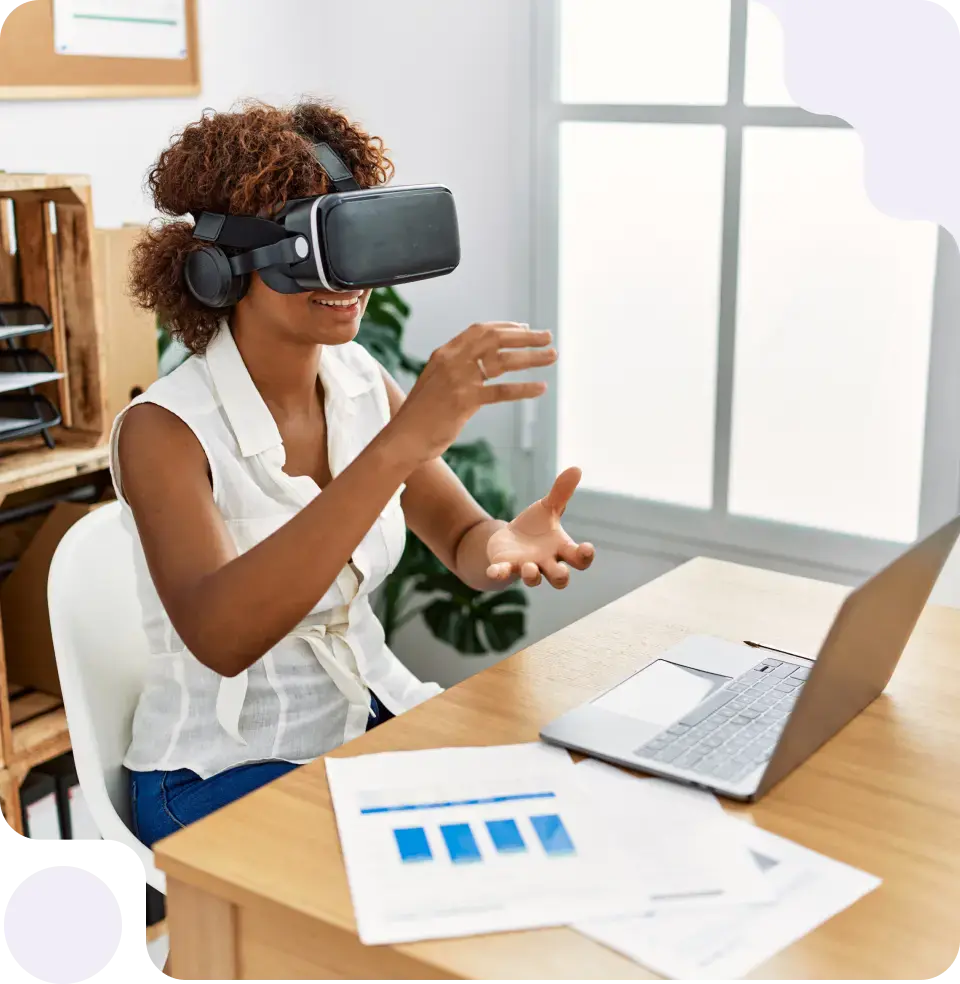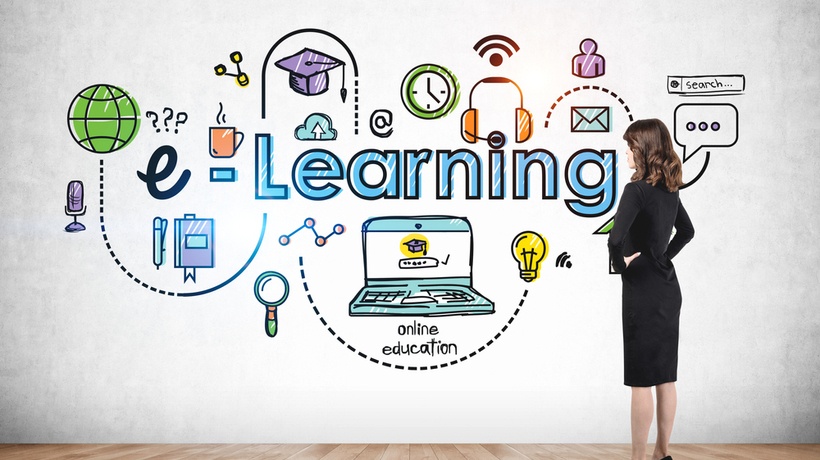
Gone are the days of static PowerPoint slides and passive learning. Today’s online education landscape demands innovative approaches to create engaging eLearning experiences that truly make an impact. Learners now expect more than just information delivery; they seek interactive and immersive experiences that capture their attention and sustain their engagement.
Imagine stepping into a virtual world where you’re greeted by an immersive learning experience that lets you explore intricate topics from any perspective. This is the transformative power of immersive learning, ready to elevate your eLearning programs to a new level.
The Power of 3D and Immersive Design in eLearning
Enhancing Retention and Comprehension Incorporating 3D interactive environments in eLearning has shown remarkable benefits in improving knowledge retention and comprehension. For instance, Virtual Reality (VR) interactions provide a more immersive and memorable learning experience compared to traditional methods. Studies indicate that students who engage with VR training perform better in both short-term and long-term retention tests, translating to a more effective learning experience where skills can be practically applied.
Boosting Learner Engagement 3D design helps create dynamic, immersive environments that draw learners into the content. Realistic simulations of relevant scenarios make the learning experience more impactful and relatable. By using 3D elements, courses become interactive adventures that learners can explore, resulting in higher levels of engagement and improved learning outcomes.


Applications of 3D Design in eLearning
Now that we understand the value of 3D design in online learning, let’s explore how to integrate these elements into your eLearning content. There is no one-size-fits-all approach, as 3D design can be customized to suit various learning needs. Here are some effective ways to use it:
- Animation Using 3D models and animations allows learners to delve into complex concepts from different perspectives. When paired with high-quality sound design, visuals, and storytelling, animation becomes a powerful tool for conveying memorable messages and ideas.
- Virtual Reality (VR) and Augmented Reality (AR) Integrating VR and AR takes immersion to another level by allowing learners to experience content without real-world risks or costs. While VR offers a fully immersive experience that replaces the real world with a simulated environment, AR enhances real-world surroundings by overlaying digital elements onto a live view. Though AR and VR require specific equipment like headsets or smartphones with cameras, they offer unique, interactive experiences that can be highly engaging.
- 360° Video 360-degree videos and interactive imagery provide learners with a panoramic view of different scenarios, enhancing accessibility without requiring specialized equipment. These elements can be viewed on multiple devices, allowing users to explore entire scenes beyond what a static image can show. For an even more immersive experience, 360° elements can be used in VR settings.
Tools for Creating Immersive eLearning Content
- Embedding 3D Elements To bring your immersive vision to life, start with a powerful authoring tool. Platforms like Articulate 360, for example, enable seamless integration of 360° imagery, 3D design, and VR elements into eLearning content with ease.
- Creating 3D Content Next, you’ll need 3D modeling software, such as Blender or Cinema 4D, which can create everything from immersive environments to custom animations. Tools like Unity or Unreal Engine are ideal for developing gamified learning experiences that push the boundaries of traditional eLearning.
- Implementing 3D Design Effectively When incorporating 3D elements, it’s important to align them with your learning objectives. Make the content interactive and meaningful by including quizzes, assignments, or simulations reinforcing learning outcomes. Collect feedback to measure the impact of the 3D elements and make adjustments where necessary.


Conclusion
Integrating 3D design and immersive content into eLearning isn’t just a trend—it’s a significant leap forward in educational technology. Static, uninspiring eLearning is being replaced by dynamic, interactive experiences that drive deeper engagement and understanding.
By leveraging tools like Articulate 360, Blender, and Unity, educators can craft rich, immersive learning environments that captivate learners and transform how knowledge is delivered and retained. The future of eLearning is here, and it’s more interactive, immersive, and effective than ever before.
Unlock the Potential of Talent Development LMS
Request a free demo today to explore the platform’s full capabilities and see how it can elevate your online learning initiatives. With Talent Development LMS, you’re not just choosing a learning management system—you’re investing in a powerful solution designed to help you reach your online training objectives and propel your organization toward success.

